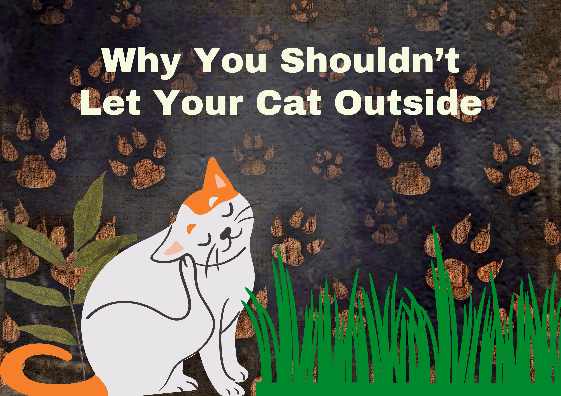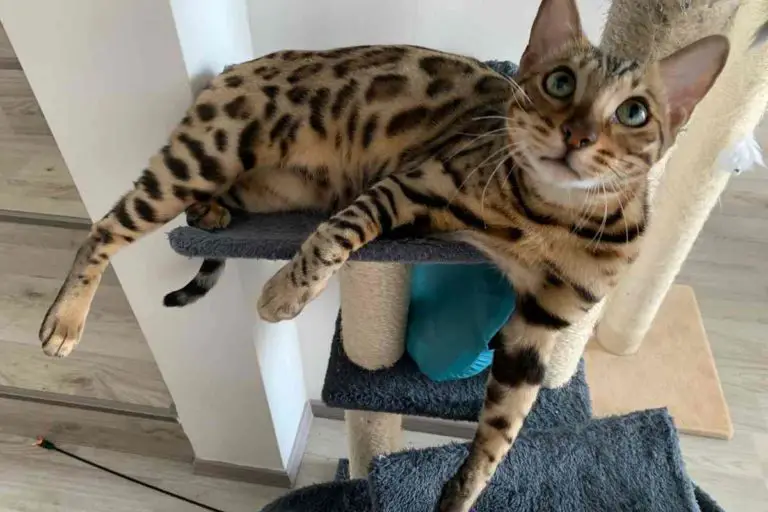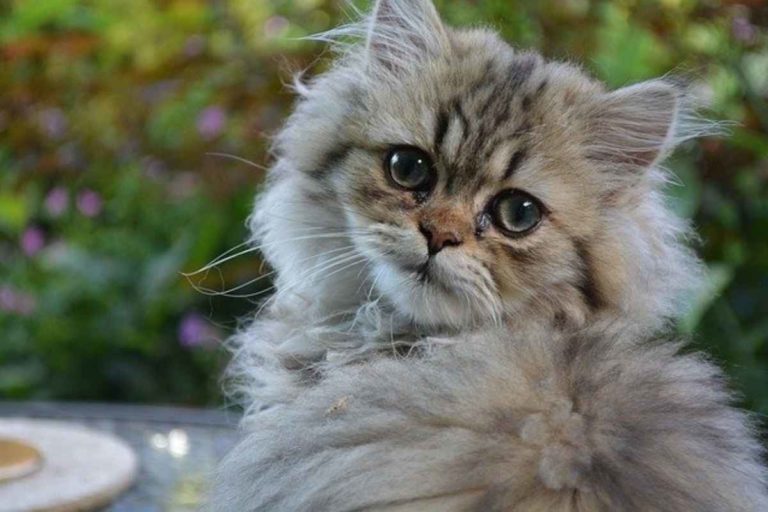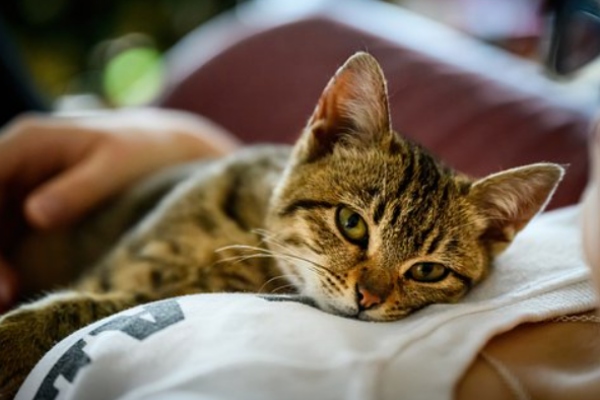Do Ragdoll Cats Shed: 19 Causes & 12 Control Measures

Ragdoll cat lovers always ask do ragdoll cats shed, and that is exactly what we will be discussing throughout this post.
Some people say they don’t shed, that is a big lie because ragdoll cats do shed a lot once to twice a year, keep reading!!!
Yes, Ragdoll cats do shed fur, but it is far less than a regular cat since they lack an undercoat. One of the most significant variables in influencing how much a ragdoll cat sheds is its undercoat. Because Ragdolls have a thicker winter coat that must be shed in the spring.
Ragdoll cats are known for their blue eyes, luxuriously long fur, and calm demeanor.
These beautiful animals are relatively rare to find in shelters or on the street, but some people worry that they might shed too much hair.
What makes them different from other breeds? Do they really shed more than other cat breeds? And if so, is it something that can be prevented?
You will get some answers to your questions about these gorgeous animals, so keep reading.
Do ragdoll cats shed
Ragdoll cats do shed, but it is considerably less than the normal cat since they lack an undercoat. The undercoat is one of the most important factors in how much a ragdoll cat sheds.
Because Ragdolls acquire a thicker coat throughout the winter, which they will have to shed in the spring.
Ragdolls are longhaired cats, so you should expect some shedding from them.
The ragdoll’s body temperature, season, and nutrition will all have an influence on how much they shed.
Note that Ragdolls are known for their thick, fluffy coats. Therefore, these cats need regular grooming to maintain their coat.
You’ll need to brush them daily or weekly to remove dead hair, reduce shedding, and keep the coat looking vibrant.
By brushing your cat regularly, you can expect less hair around your home and less shedding. If you have allergies, then this breed is perfect for you!
When do ragdoll cats shed
Your Ragdoll will shed more regularly if you live in a warm environment than if you live in a chilly one. Ragdoll cats get a thicker, denser coat in the early winter, which they shed in the spring. As a result, greater shedding occurs in the spring.
Ragdoll cats are known for their long, soft fur and friendly nature. Although it’s not a constant, ragdolls shed similar to other domestic cats.
The average cat will lose about two hundred hairs per day. Ragdolls typically go through a shedding phase twice a year where they’ll shed their winter coat and grow a new summer one.
Just as we pointed out, the answer is yes; they do shed some hair. But not as much as some other breeds, such as Maine Coons or long-haired cats.
Ragdolls typically shed less than once a year, and it’s usually only for about four to six weeks at a time.
During this time, it is recommended that you brush your ragdoll cat at least twice every 7 days.
Find out the 6 most common ragdoll eye problems and causes!!!
Causes of shedding in ragdoll cats
Here are some common causes of excessive shedding in ragdoll cats:
- Allergies
- Kidney disease
- Thyroid issues
- Excessive stress
- Fleas attack
- Genes
- Side effects of medication
- Anxiety
- Adrenal issues
- Temperature
- Lice attack
- Bacterial infections
- Fungal infections
- Cancer
- Climate and humidity
- Ticks attack
- Liver conditions
- Season
- Mites attack.
Find out the pros and cons of letting your ragdoll cat go outside without your supervision!!!
Do ragdolls shed more than other cats?
Ragdoll cats shed a lot less than other cats since they don’t have much of an undercoat. One of the most significant aspects in deciding how much your cat sheds is its undercoat.
How to reduce shedding in Ragdoll cats
Here are some steps or ways to reduce shedding in ragdoll cats:
Regular weekly brushing reduces shedding
Grooming is required for long-haired cats, such as Ragdolls, to maintain their coats smooth and silky. It’s also crucial to avoid matting. It will also aid in the prevention of skin issues.
Brushing your Ragdoll cat’s fur on a daily basis is ideal. If that isn’t possible, make a weekly grooming session with your cat a priority.
You need to begin brushing your Ragdoll cat as soon as possible. To maintain their coat smooth and silky, we recommend brushing them at least twice a week.
So that your cat doesn’t have as many objections, use a soft-bristled brush.
You should also try to create good connections, you should try concluding a grooming session with a reward.
Best Grooming tools for long hair and short ragdoll cat include:
- Oster ShedMonster De-Shedding Tool, Medium or Long Coats (DRP-SHED-RPQL).
- Hertzko Pet Deshedding Tool Gently Removes Shed Hair – for Small, Medium, Large, and Cats, with Short to Long Hair.
Here is a video of ragdoll shedding and how much they shed, click here to watch.
Keep the ragdoll body temperature low
Because shedding is encouraged by a warm environment, your Ragdoll will lose fur more frequently if you have central heating.
This is due to the fact that its coat will believe it is summer when it is not.
Do you know that temperature plays an important role in sudden ragdoll color changes? And this indirectly has an impact in your ragdoll shedding.
Therefore, to reduce shedding in ragdoll cats, do not expose your ragdoll to higher temperatures above 38-39.2° C.
Avoid and control parasite attacks on your ragdoll
Fleas, lice, ticks, and mites are the most frequent parasites that infest ragdoll cats, causing excessive shedding.
Also, keep worms away from your ragdoll; here are some ways your ragdoll might obtain worms and how to deal with them.
- Ragdoll cats get worms from ingesting fleas.
- Ragdoll cats can get worms from a mosquito bite (heartworm).
- Ragdoll cats get worms from eating a worm infected mouse.
- Ragdoll cats get worms from unkept litter boxes.
- Ragdoll cats get worms from chasing an infected rodent.
- Ragdoll cats get worms from eating worm larvae.
- Ragdoll cats get worms from unkept human footwear.
- Ragdoll cats get worms from potted plants around your home.
- Ragdoll cats get worms from unkept small flower gardens.
Find out the 17 common symptoms of worm in cats!!!
Pay attention to your ragdoll cat food
Keep an eye on your ragdoll cat’s diet. In any pet, a well-balanced diet promotes good skin and reduces shedding.
A nutritious, balanced cat food is essential for a Ragdoll. The quality of your cat’s coat is largely determined by how well you feed it.
A hungry Ragdoll will shed more fur than it would normally.
Give your ragdoll puppy a balanced diet. This aids her in minimizing even little fur shedding on the inside.
Her fur and skin will be as soft and healthy as possible if she eats a cat food high in Omega-3 fatty acids, oils, and minerals.
Give your ragdoll a warm bath once in a while
Fill a big plastic basin halfway with warm water and place it in your tub. You’re going to bathe your fluffy companion.
Ragdoll cats, unlike other feline breeds, respond favorably to bathing if initiated early enough.
As a kitten, start giving your kitty baths to help her get acclimated to this part of her “beautiful” routine.
Massage a mild pet shampoo onto her fur, then thoroughly rinse her.
Wrap her in an old bath towel to mop up the excess water, then blow dry her fur on a cold setting to keep her warm. Bathe her once a month at the very least.
Bathing will greatly aid in the maintenance of a well-groomed cat. Because most cats dislike washing, this may be easier said than done.
Find out the common reasons why ragdoll cats may bite you!!!
Avoid giving your ragdoll table scraps or stale food
Table scraps are an inadequate diet for ragdolls and can cause gastric upset, resulting in excessive shedding.
Do you know that when trying to pick up table crumbs on the floor, your ragdoll cat might take up a bacterial pathogen?
Allowing your ragdoll to pick up food off the floor is not a good idea; always feed your ragdoll from a clean container.
When you’re eating, don’t let your ragdoll pick items off the table, and if they do, don’t let them.
Ragdoll cats, in general, have delicate stomachs that are readily irritated by stale food or table scraps.
Ensure that your ragdoll drink enough water
Dehydration will harm not just your ragdoll’s internal organs, but also his or her skin this can lead to unnecessary shedding.
Do not assume that just because you feed your ragdoll wet food, your ragdoll’s water demands will be met; this is not the case.
To avoid dehydration, ragdoll cats require at least half a cup of water every day.
Because dry cat food or kibbles contain little water, your ragdoll will want water to aid digestion.
Check your ragdoll’s drinking can on a regular basis, and don’t let water sit for more than one day.
Try giving your ragdoll Omega-3 Shedding Supplement
Omega-3 shedding supplements have been shown to aid shedding in ragdolls, however this should be addressed with your veterinarian.
Omega-3 fatty acids not only improve your ragdoll’s vision, but they also include chemicals that keep your skin healthy.
Do not just get any Omega-3 Shedding Supplement, always contact your vet for the right product recommendations.
Practice healthy hygienic processes
Good hygiene habits are only a preventative approach to assist ragdoll cats to avoid needless things that might cause shedding.
To protect your ragdoll from shedding, follow these hygiene guidelines:
- Ensure that your ragdoll cat has access to fresh water.
- Changing your ragdoll’s drinking water on a regular basis is essential.
- Maintaining the cleanliness of your ragdoll feeding dishes.
- Removing your shoes allows your ragdoll to avoid being ill from worms since the footwear is unkept.
- Allowing your ragdoll to use filthy litter boxes is not a good idea.
- Keeping your house’s floor clean.
- Allowing your ragdoll no access to his long-standing feces.
Try vacuuming your house and ragdoll cats
When it comes to how to keep ragdolls from shedding, vacuuming or blowing your ragdoll is also a fantastic choice.
This procedure will remove dead skin and all the dirty stuff from your ragdoll’s body. Purchasing a vacuum cleaner or blower may be costly, but you will utilize it for other purposes around the house.
If you’re thinking about purchasing a vacuum cleaner, make sure you acquire some tasty treats to make cleaning your ragdoll a breeze.
Pay attention to ragdoll cat allergies
This is one of the most crucial things you can do to prevent your ragdoll from shedding excessively.
Allergic responses in ragdolls can be caused by a variety of factors. Pollen, mold spores, dust mites, and lost skin cells are examples of frequent allergies.
Food allergies can manifest themselves in the form of skin disorders or hair loss, so keep an eye out for skin and hair issues in your ragdoll cat.
Symptoms of allergic reaction in ragdoll cats
Here are some typical signs that your ragdoll cat is sensitive to food or certain materials:
- SNEEZING
- VOMITING
- RUNNY EYES
- ITCHY EARS
- RUNNY NOSE
- LICKING FREQUENTLY
- DIARRHEA
- SWOLLEN FACE
- SKIN CHEWING
Find out the common health issues associated with ragdoll cats!!!
Regular medical check-ups
When it comes to how to avoid ragdolls from shedding, this is a crucial step to do because there are a variety of health issues that can cause shedding in ragdolls.
Always consult your veterinarian about your ragdoll and get your ragdoll examined on a regular basis.
There are a number of health risks linked with shedding that you should be aware of, including the following:
- Kidney disease
- Thyroid issues
- Bacterial infections
- Fungal infections
- Cancer
- Liver conditions
I hope your question Do Ragdoll Cats Shed has been answered, and you have understood what you need to do to avoid unnecessary shedding?
Let me recap before we go!!!
How to stop ragdoll cats from shedding excessively;
- Regular grooming
- Pest control
- High quality cat food
- lower ragdoll body temperature
- Avoid table scraps
- Avoid unnecessary dehydration
- Avoid allergies
- Try Omega-3 Shedding Supplement
- Practice healthy hygienic processes
Find out if humans can get worms from cats and how this can happen!!!

![How to Keep Outdoor Cats Warm in Winter [10 Hints] How to Keep Outdoor Cats Warm in Winter](https://petcreeks.com/wp-content/uploads/2023/10/pexels-aleksandr-nadyojin-7335655.jpg)


![Why Does My Cat Smell So Bad [12 Potential Reasons] Why Does My Cat Smell So Bad](https://petcreeks.com/wp-content/uploads/2023/10/cat-3054260_640.jpg)

